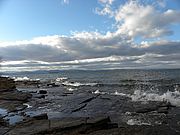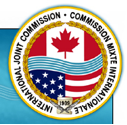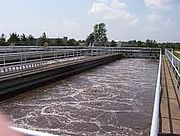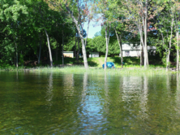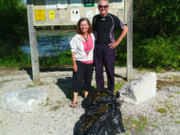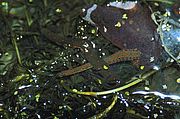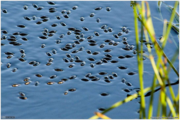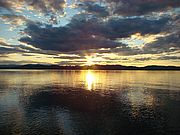No algae blooms reported from 10 LCC monitoring locations. MORE Read...
News from Selected Month
The International Joint Commission (IJC) delivered recommendations to Canada and the United States in late July regarding a Plan of Study for flooding in the Lake Champlain Richelieu River basin. They called for a $14.3 million dollar boondoggle that would rehash issues previously studied in 1937 and 1981. MORE Read...
In early August, WCAX reported that a worker error led to discharge of a half-million gallons of untreated sewage to the Winooski River from the Essex Junction wastewater treatment plant. The incident was one of at least thirty cases of sewage overflows in Vermont this year. MORE Read...
The Vermont Legislature has created a Lake Shoreland Protection Commission to provide information about existing and proposed shoreland protection measures and receive public input on ways to improve regulation of shoreland properties. MORE Read...
In mid-August, LCC members Joan and Pete Smith joined Staff Scientist Mike Winslow to harvest the invasive European frog-bit from a bay east of Dead Creek on Missisquoi Bay. Together they brought in approximately 900 plants! MORE Read...
A team of student interns working with NASA has developed a model that interprets data collected from satellites to detect and track algae blooms on Lake Champlain. The three young researchers, Tiffani Orne from Liberty University, Hayley Solak from Clark University, and Sam Weber from Virginia Tech, conducted their work from afar, under the guidance of Dr. Kenton Ross. MORE Read...
Leeches are related to earthworms. Once you get past the initial revulsion for the animals, you can begin to see a grace and elegance in the orange spotted flattened worms. Both earthworms and leeches are hermaphroditic. Like earthworms they have segmented bodies and lack a structural skeleton. MORE Read...
Late summer is the time to see this year’s crop of whirligig beetles, those watermelon seed sized insects that spin and spin on the water surface. The beetles congregate atop tranquil waters around docks or near shore vegetation. The whirligigs that emerge this time of year are newly hatched from eggs laid in the spring. MORE Read...
Annual memberships and donations fuel LCC's work for clean, accessible water. By joining LCC and giving each year you help protect and restore water quality, safeguard natural habitats, provide access, and educate and engage people in stewarding Lake Champlain. MORE Read...

